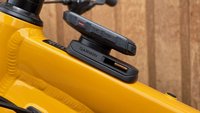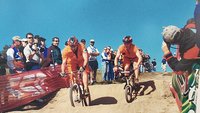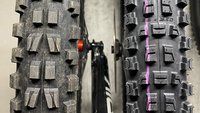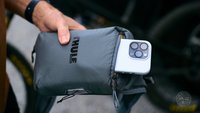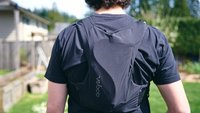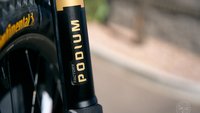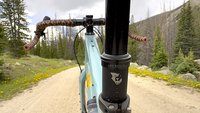Posted by: [email protected]
To determine saddle height I use exactly the method that Andrew describes in his blog post (although I think with 30-35 degrees knee bent he probably meant 145-150 degrees?). Any change (new saddle, new shoes, etc.) I redo it.
No, I very clearly meant 30-35°. It's the angle between a straight line drawn through your femur and where it bisects with your tib-fib at the 6 o'clock pedal position. It's not going to make any difference if you'd prefer to measure the larger inside angle (180°-145° = 35°) but the fit systems I've used at work have always relied on the first measurement.
-----
I find the fastest way to ballpark a new mountain bike is to adjust the saddle for a full extension (straight leg / no knee bend) with the rider's heel on the pedal at bottom dead center (inline with the actual seat tube angle from the BB). I've been setting up new bikes for test rides and sales for riders for twenty years now using this method and it consistently delivers usable results.
Posted by: eriksg
On saddle heights, I typically see the opposite. People of all ages riding around with saddles far too low for good pedaling, presumably so they can touch the ground without getting off the saddle.
I understand the draw for someone who isn't so comfortable starting and stopping, or just doing a trackstand . . . I just can't imagine trying to ride like that for any period of time.
I don't disagree with your observation if we're talking about road and commuter bikes (even on high-end road bikes I often see riders with saddles much too low).
I'm surprised if that's your observation of folks riding dropper posts. I can't go for a ride, or a couple of days in the shop, without seeing setups where the dropper post is slammed to the seal-head and clearly extends too long for any range of optimum pedaling height.
I rarely see riders with dropper posts where their climbing height is on the too-low side of the optimum window for most cyclists.
Posted by: fartymarty
I can't believe saddle height isn't more of a topic in mtb. We obsess about reach to the millimeter but have no idea what our pedalling seat height is.
Handlebar width is the one that really shocks me. Especially for riders like myself who went to wider-than-optimal handlebars to work around issues with bike geometry (steep HTA / short Reach / low Stack). But I like to go back to this Richard Cunningham quote:
"To set the record straight, personal preference is reason enough to defend your favorite width. I'm not going to dictate which bar you should ride." (I used it here)
The fact is the 'right' saddle height range, even on a road bike with all the geometry static, ranges wildly. On a mountain bike with sag, geometry optimized (steeper or slacker STA) for different terrain or to accommodate different frame features (tire clearance, chain stay length) and then flats v. clip-in pedals and where a rider's foot interfaces with the pedals the optimum height is wild. Even whether a rider drops their heels or rides more toe-down can make a notable difference in height.
And that number, saddle height, is one of the few variables of mountain bike fit that's infinitely adjustable (at least in one direction) so it doesn't really play into most folks purchasing decisions like getting the right Reach/Stack ratio does. Even then between headset spacers and some 3"+ of variable bar rise just in production handlebar options plus stem length, there is a lot more tune-ability than I think most folks consider. Reach is just a simple number to shop.
